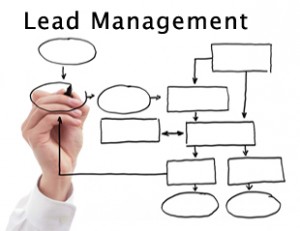Convergence of PRM and Marketing Automation Facilitates Superior Marketing Alignment
 One in every five B2B organizations use a marketing automation platform (MAP), and the present trend indicates that it will grow to 40% by 2016, according to B2B research and advisory agency SiriusDecisions. Organizations are increasingly integrating marketing automation with their CRM databases and Partner Relationship Management (PRM) strategy to facilitate efficient lead nurturing and achieve the most favorable sales potential. This three-way alignment optimizes stand-alone solutions and multiplies sales capabilities of the organizations, creating marketing alignment.
One in every five B2B organizations use a marketing automation platform (MAP), and the present trend indicates that it will grow to 40% by 2016, according to B2B research and advisory agency SiriusDecisions. Organizations are increasingly integrating marketing automation with their CRM databases and Partner Relationship Management (PRM) strategy to facilitate efficient lead nurturing and achieve the most favorable sales potential. This three-way alignment optimizes stand-alone solutions and multiplies sales capabilities of the organizations, creating marketing alignment.
The Case for Marketing Automation Platform-CRM-PRM Integration for Superior Marketing Alignment
The prospect of efficient business processes and enhanced benefits has made marketing automation a key attraction for businesses. Organizations operate in a complex ecosystem that demands attention to a variety of factors. It has become increasingly difficult to track and report marketing progress and sales opportunities across partner networks while managing campaigns and opportunities. Many fall upon PRM solutions to maintain and boost partner-vendor relationship and ensure superior coordination among different channel players.
The PRM is aligned with the CRM, holding customer database and marketing automation tools for better visibility and tracking of performance of partners, co-ops, and other assets. While the former focuses on customer lifecycle management, PRM solutions take care of reporting and analytics suitable for partner lifecycle management. Marketing automation integrated with the two enables businesses to integrate records and track and monitor typical sales opportunities created in a partner network and specific interested customers.
Vendors and manufacturers can also set up on-demand services through marketing automation using social media, telemarketing, and email. By integrating PRM and CRM with marketing automation platforms, businesses can offer instant portal access and training courses in their chosen language and medium. A big plus is that partner branding can be aligned with marketing resources and increased ability to monitor and manage leads and campaigns.
There is no need to employ multichannel strategies, tools, and resources for deal registration and management of opportunities. Often channel managers run helter-skelter as they work with manual systems and spreadsheets to deal with partners and customers. Marketing automation facilitates use of same system by brand owners and partners, reducing time and gap in interaction. With vendors rolling out campaigns and leads in no time to partners using the vertical-sharing system, both can work side by side, enhancing coordination and cooperation.
PRM-Marketing Integration: Summary of Benefits
Integration of PRM with marketing automation offers three important benefits.
1. It helps in automatic lead distribution to partners without any coordination issue.
2. It helps bridge the gap between a business and its partners. All solutions are immediately available to partners. They can interact, learn, receive training, and lead sales efforts without overburdening the business.
3. It is easy to monitor and manage a campaign and activity on leads and holistically measure direct and indirect sales benefits to partners using the marketing automation platform.
With increased availability of SaaS solutions, there is no major technical obstacle that impedes PRM-marketing automation integration. Many consider budget and disconnect issues caused by failure of the system as key hindrances. However, the benefits of aligning the two outweigh the concerns. No doubt PRM can be a stand-alone solution, but when integrated with marketing automation, its compatibilities multiply, assuring better lead development and campaign execution.











